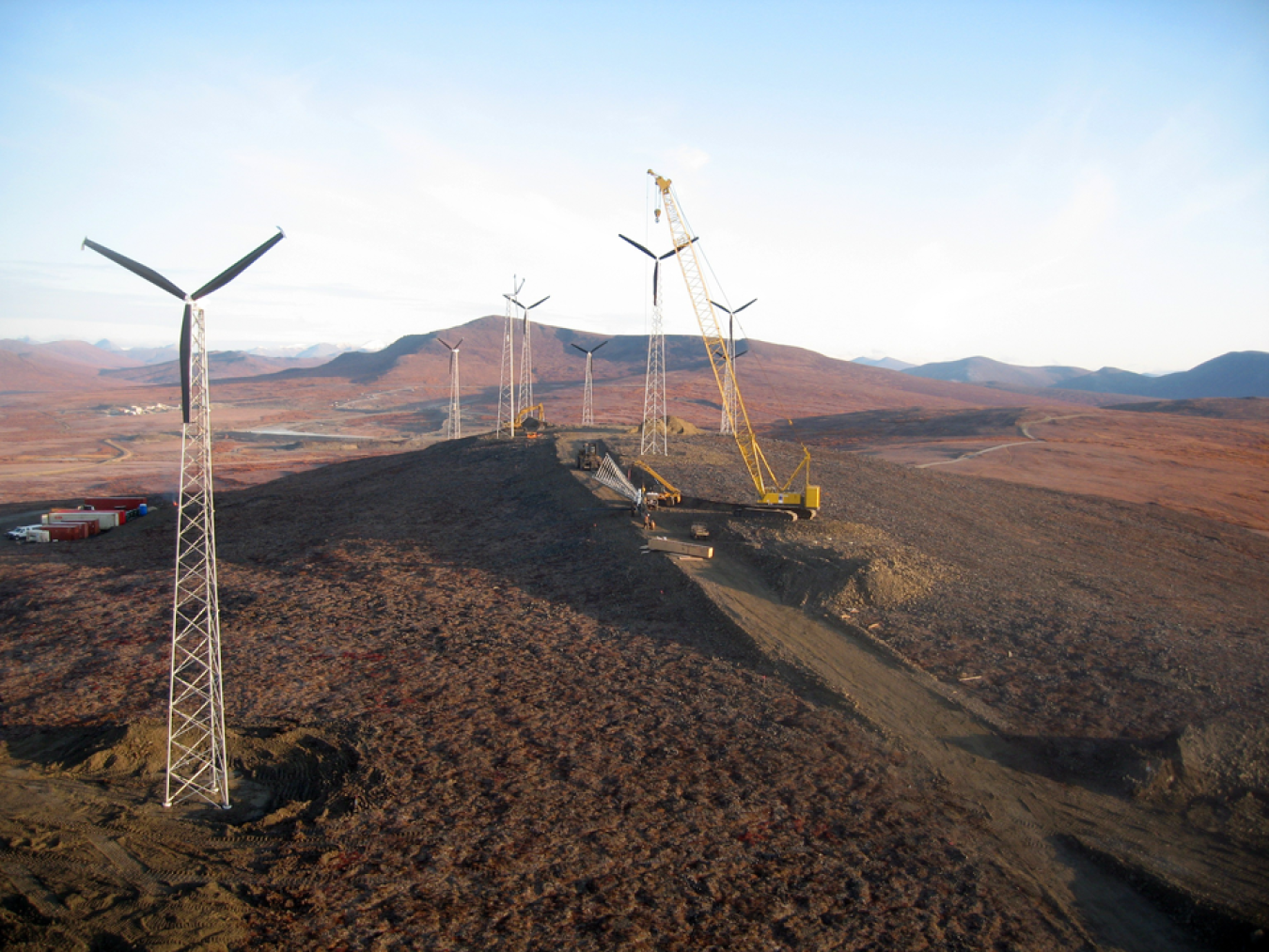
The Energy Department is helping Alaska Native communities reduce their energy costs by investing in renewable energy and energy efficiency upgrades. | Photo courtesy of Western Community Energy.
I just arrived back in D.C. after participating in the annual Alaska Rural Energy Conference in Anchorage. My team works closely with organizations like the Denali Commission, the Alaska Energy Authority and the University of Alaska Fairbanks to help Alaska Native communities reduce their dependence on oil and improve energy services and efficiency to support everything from cleaner transportation to affordable home heating. This recent trip further helped us understand where we can have the biggest impact and what issues are most pressing to rural communities in Alaska.
Many Alaska Native villages are struggling to absorb the impact of high energy costs. As my colleague from the Denali Commission Joel Neimeyer has said, the cost of energy has increased threefold in the past 10 years for rural Alaska villages. It’s not uncommon for these families to spend nearly half of their monthly income on fuel to power their homes.
While much of rural Alaska relies on expensive diesel fuel for power, community-scale wind energy and diesel-wind hybrid systems are increasing. The Renewable Energy Atlas of Alaska, issued by the Alaska Energy Authority, recognizes new wind projects that are helping Alaskan villages save money and cut pollution -- contributing to more than 63 megawatts of installed wind capacity across the state. For example, the Kodiak Electric Association has installed three 1.5 megawatt wind turbines that are supplying nearly 10 percent of the community’s electricity and have cut diesel fuel use in half. The Alaska Village Electric Cooperative, which covers over 50 Interior and Western Alaska villages, has installed wind-diesel hybrid systems in nine villages -- supporting its goal to offset 25 percent of fuel they buy today through renewable energy and efficiency upgrades by 2018.
This is a good start, but more needs to be done to help other villages reap similar benefits. That’s why we’ve launched a partnership with the Alaska Center for Energy and Power to conduct technical and economic analyses of wind-diesel energy systems to help communities make smart energy choices and develop programs to make sure that local workers are trained and employed to operate and maintain these systems.
Our Alaska Strategic Technical Assistance Response Team (START) program echoes this commitment. Last year, we selected five Alaska Native communities for technical assistance with community-based energy planning, awareness and training programs, and clean energy installations and upgrades. For instance, our energy experts have helped the Organized Village of Kake install a solar photovoltaic project, conduct a comprehensive assessment of biomass resources and complete grant applications to help finance local energy projects. Located about 100 miles from Juneau on an island in the Gulf of Alaska, Kake feels many of the same challenges facing rural communities, and with less than 600 residents, each energy improvement will pay dividends in long-term sustainability and energy security.
Building on this work, we announced with the Denali Commission earlier this week new START awards to five Alaska Native villages. Each village is also eligible for up to $250,000 in financial assistance to deploy a local renewable energy or efficiency project. Additionally, the Energy Department is making $7 million available to support clean energy projects led by Alaska Native and Native American tribes -- adding to more than $40 million in tribal clean energy investment since 2002.
For more information on all of this work check out energy.gov/indianenergy, including our new study on renewable energy financing options for Alaska Native villages and energy resource potentials across their land.